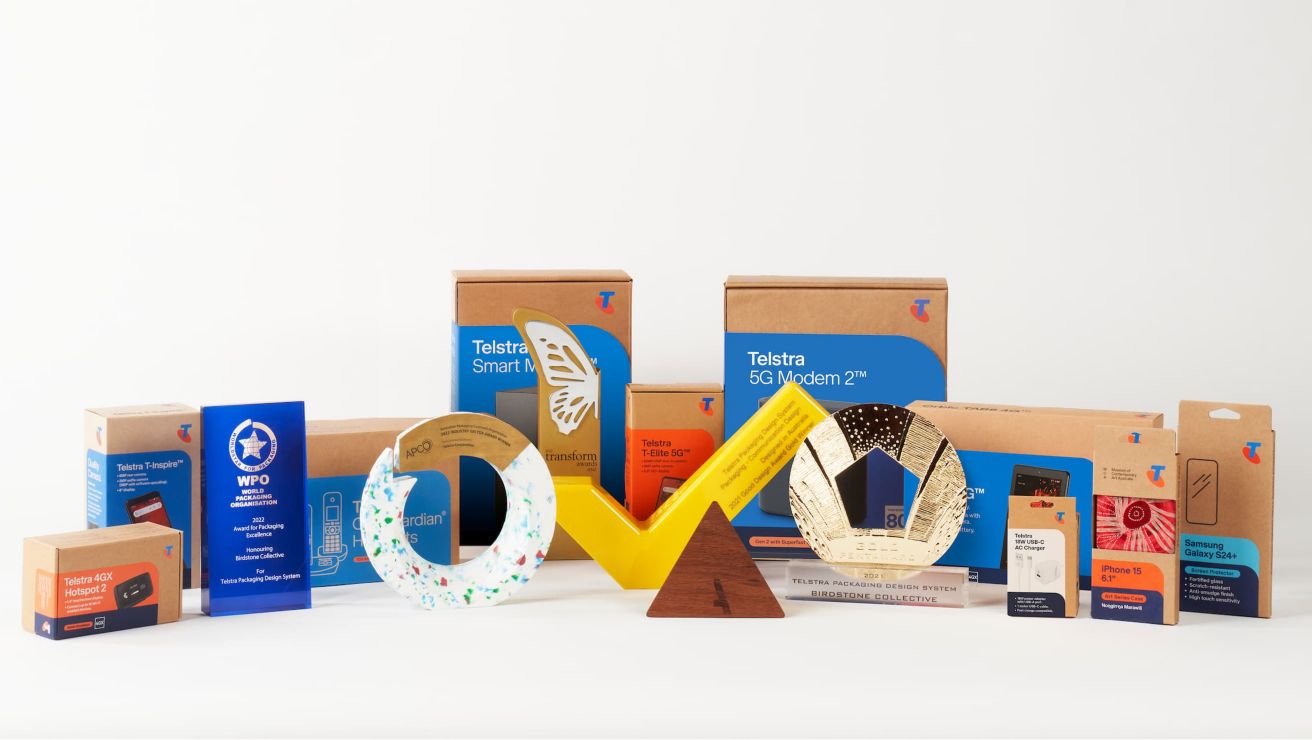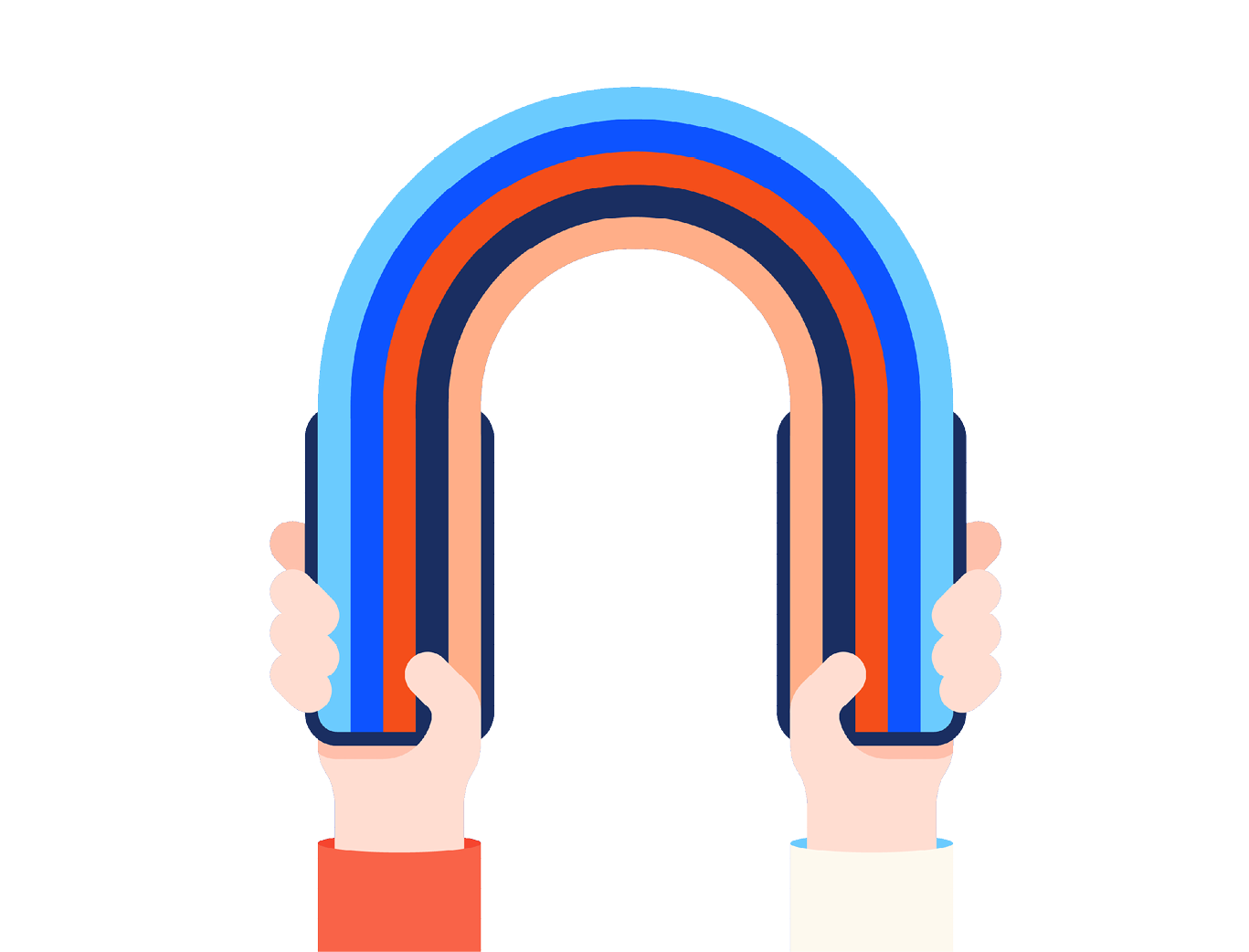
Recycling
REUSED OR RECYCLED
Over 769,000 mobiles, modems and other devices
- 303,879 mobile phones reused or recycled
- 465,187 modems and other devices reused or recycled
In the 2025 financial year.
Our packaging is made from renewable or recycled material


Getting rid of plastic
840,000 plastic bags eliminated
In the 2025 financial year.

Reducing waste
Smarter accessory packaging design
SUSTAINABLE PRODUCTS
Smart Modem 3 casing contains 95% recycled plastic
Reducing emissions
To date, we've reduced our combined scope 1 and 2 emissions by 44% and our scope 3 emissions by 43%. We're targeting to reduce our combined scope 1+2 emissions by 70% by 2030, and our scope 3 emissions by 50% by 2030 (both from a FY19 baseline).
- Scope 1 emissions come from the fuel running our vehicles and generators
- Scope 2 emissions come from the electricity used in our networks, offices & stores
- Scope 3 emissions come from our value chain, including the products and services we purchase and the power it takes for our customers to run the devices we supply.
Our reduction targets include a long term commitment to achieve net-zero greenhouse gas (GHG) emissions by 2050. Our target to reduce emissions is from a 2019 financial year baseline (excluding Digicel Pacific).
EMISSIONS TARGETS PROGRESS
Scope 1+2 emissions down by 44%
We're working within our organisation and with our suppliers and partners to reduce carbon emissions across our operations, products and services.
From a 2019 financial year baseline (excluding Digicel Pacific).
CLIMATE CHANGE INDEX
Awarded an 'A-' rating
We're amongst the top companies globally in the CDP Global Climate Change Index 2024.
REDUCING EMISSIONS
116,876 megawatt hours saved
Decommissioning legacy networks and other energy efficiency initiatives have saved 116,876 MWh or 73,223 tonnes of CO2 equivalent on an annualised basis.
In the 2025 financial year.
Watch: Telstra Sustainability - Emissions
00:00 Introduction
Footage: A visualisation of the Earth zooming out into space, transitioning into a panoramic view of icebergs.
Audio - Narrator: Greenhouse gas emissions trap heat in the atmosphere, contributing to climate change.
Footage: Scenes of industrial activity, farming, and waste disposal.
Audio - Narrator: These emissions come from various sources, including burning fossil fuels, farming and waste.
00:20 Telstra’s Approach
Footage: Telstra logo and animated graphics showing the words ‘measure’, ‘monitor’ and ‘manage’.
Audio - Narrator: At Telstra, we align with the Greenhouse Gas Protocol to measure, monitor and manage our emissions in three scopes.
00:30 Scope 1 – Direct Emissions
Footage: Working Telstra vehicles and backup generators.
Audio - Narrator: Scope 1 emissions are direct emissions from sources that we own or control, such as the fuel we use in our company vehicles and backup generators.
00:42 Scope 2 – Indirect Emissions from Electricity
Footage: A Telstra exchange powered by electricity.
Audio - Narrator: Scope 2 emissions are the indirect emissions from the electricity we buy and use.
Footage: A person turns a light on at home. Image of powerlines, transitioning into a coal power station in operation.
Audio - Narrator: These emissions occur at the energy generation site, not where the electricity is used.
Footage: Animated Graphic of a coal power station blowing out the words ‘Scope 2 Emissions’.
Audio - Narrator: For instance, if a Telstra exchange uses electricity generated by a coal power station, the emissions from burning the coal are considered Telstra’s Scope 2 emissions.
01:06 Scope 3 – Other Indirect Emissions
Footage: Supply chain visuals, including manufacturing and shipping examples and a woman working on her laptop.
Audio - Narrator: Scope 3 emissions include all other indirect emissions from our activities across the value chain—both upstream and downstream.
01:15 Upstream Emissions
Footage: Manufacturing and transport of Telstra equipment.
Audio - Narrator: Upstream emissions include those from our suppliers related to manufacturing and transporting the equipment, materials and other goods we purchase.
Footage: Scenes transitioning from inside a monitoring facility, a waste management plant, a travelling businessman, a woman working with her laptop on a train, a woman working on her laptop from home and two men walking through the lobby of the Telstra building.
Audio - Narrator: Upstream emissions also include emissions from services we procure, waste disposal, business travel, employee commuting, working from home and any assets we lease.
01:40 Downstream Emissions
Footage: People walking through Telstra stores, transitioning to testing out phones and Telstra modems operating at home.
Audio - Narrator: Downstream emissions, which happen after we deliver our goods or services, include the distribution, use, and disposal or recycling of our products—such as the energy used by modems in customer homes.
Footage: A large boat with workers setting up subsea cables.
Audio - Narrator: They even include the emissions associated with our investments.
02:00 Conclusion
Footage: Transitioning videos between the inside of a Telstra Exchange, a recycling bin filled with old phones and a manufacturing plant. Ending with transforming animated graphics of people with hearts above their head, a hand holding multiple people (customers) and a planet covered in hearts.
Audio - Narrator: We can reduce emissions both within our organisation and across our value chain, creating a more sustainable future for ourselves, our customers and our planet.
How we interact with nature
We interact with nature every day - when we construct or maintain our telecommunications network, or when we provide technology solutions to customers. We also depend on resources from nature - such as the metals and minerals used to manufacture technology and the wood used to make cardboard for our product packaging.
Our ambition is to protect biodiversity in the environments in which we operate, and to harness technology to monitor, protect and regenerate nature. We are trialling technology-based solutions to restore ecosystems and improve biodiversity outcomes.
Renewable energy
Helping decarbonise our electricity grid
We've now enabled renewable energy generation equivalent to 76% of our consumption, towards a target of 100% by the end of 2025. In other words, we're supporting projects that put more renewable energy into the national electricity grid, so there's more to go around.
INVESTING IN RENEWABLES
Supporting renewable energy projects worth more than $1.6B
Renewable energy has environmental and economic benefits. We've signed seven power purchase agreements to date, including one with Australia's largest wind farm. These are just some of the ways we're helping to decarbonise Australia.
Our vision for tackling climate change
Watch video: Telstra Sustainability Climate Adaptation
00:00 Introduction
Footage: Aerial view of Australian Suburbs, thunderstorms, a rainforest, a Telstra store and Telstra network equipment.
Audio - Narrator: Our climate is changing, and this can impact our customers, people, and network equipment in a variety of ways.
00:16 Climate Risk Categories
Footage: Transitioning videos between dry farmland, back burning of bushland and wind turbines.
Audio - Narrator: We describe our exposure to climate change as either a physical or transition risk.
00:22 Physical Risks
Footage: Transitioning videos of bushfires, cyclones, and flooding.
Audio - Narrator: Physical risks can be acute events such as bushfires, cyclones, and storms.
Footage: Transitioning videos of a hot day in a urban centre and heavy rainfall in a forest.
Audio - Narrator: Or chronic long-term trends, like increasing temperatures and changing rainfall patterns.
00:36 Impact of Acute Physical Events
Footage: Damaged network equipment and emergency crews responding.
Audio - Narrator: Acute physical events can damage our equipment and cause network outages.
Footage: Two people working at home experience a power outage.
Audio - Narrator: One of the most common climate impacts to our network is a loss of power when the mains electricity grid fails.
00:48 Impact of Chronic Temperature Rise
Footage: Woman lying uncomfortably in bed due to heat, a hand pressing the increased cooling on a thermostat.
Audio - Narrator: Chronic increase in temperature can make heatwaves more intense, affecting how well you sleep, and increasing how much cooling our equipment needs.
00:58 Telstra’s Emergency Response
Footage: Transitioning videos of the Australian and New Zealand flags, people in suits walking and response crews working on restoring Telstra equipment.
Audio - Narrator: At Telstra, we work closely with State and Federal emergency agencies to deploy back-up power generators and make critical repairs during natural disasters.
Footage: Payphones and Wi-Fi hotspots operating in communities.
Audio - Narrator: We have also increased the resilience of payphones and Wi-Fi hotspots in vulnerable communities to keep people connected when they need it most.
01:18 Transition Risks
Footage: Transitioning videos of a panoramic view of flags, a man presenting at a podium, a side by side panel of corporate worker looking at her phone and a person looking at investment trends and wind turbines.
Audio - Narrator: Transition risks describe how the policy, economic and regulatory landscape, as well as the expectations of our customers and investors, will change as governments and businesses transition to a low carbon future.
01:34 Opportunities for Climate Resilience
Footage: Multipaneled videos of Telstra Teams working at environmental sites, climate change activists, renewable energy sources and public transport.
Audio - Narrator: There are also opportunities for us to support our customers and communities to build climate resilience and adopt new technologies as we transition to a low carbon world.

report
Bigger Picture Sustainability Report
Where we're making the biggest impacts.

report
Enabling Positive Climate Action
How we've helped businesses reduce emissions with tech.
Rather get in touch? Let's get you connected
Online help & support
Find answers to your frequently asked questions.
My Telstra app
View your services, pay your bill, troubleshoot tech issues, contact us via messaging and much more.
Multilingual support
Speak with us in your preferred language. We've got you covered.

